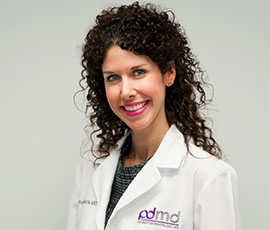Sunblock made simple
There's been a lot of debate about sunblock in the media. Do they cause more harm than good? And if not, which sunblock is best?
Let's set the record straight. Exposure to the sun increases the risk of skin cancer. Taking a daily vitamin D supplement and eating foods rich in vitamin D should be sufficient to maintain healthy levels of vitamin D. For more information, visit the American Academy of Dermatology's website.
SO WEAR SUNBLOCK. Every. Single. Day.
Now, there are some guidelines to follow.
1. Sunblocks should be broad spectrum, meaning they block both UVA and UVB rays.
UVA rays cause the signs of aging (A for Aging): wrinkles, brown spots, and loss of elasticity (read: loose skin). They pass through clouds and are unaffected by weather. UVA rays also cause skin cancer.
UVB rays cause sunburns (B for burning), and vary with the time of day and season. The SPF rating on sunscreen means the level of protection against UVB rays only. Sunblocks should be at least an SPF 30. Anything higher than that doesn't make much difference.
2. Sunblocks consist of two classes of ingredients: chemical blockers and physical blockers. Chemical sunscreens need to be applied 30 minutes before sun exposure so that they can be absorbed into the skin. Physical blockers, such as zinc oxide and titanium dioxide, sit on the surface of the skin and work immediately. So which is better? Many sunblocks contain a combination of the two classes. Some people are irritated by chemical sunscreens, in which case a physical block would be better. Physical sunblocks also tend to be more sweat resistant (which is handy for exercising). Despite claims, there is no evidence that chemicals in sunblock cause cancer.
3. Sunblocks must be re-applied every two hours, and immediately after swimming or excessive sweating. Use the right amount: a teaspoon full for the face; a shotglass full for the body.
At Premier Dermatology, MD, in Aventura, we recommend and carry many sunblocks. Here are just a few we love:
EltaMD UV Pure SPF 41: a broad-spectrum, chemical-free sunscreen. It's great for kids and adults whose sensitive skin can be irritated by chemicals. It's also fragrance-free, paraben-free, and noncomedogenic (as are all the EltaMD susncreens). Dr. Bilu Martin puts it on her kids every single morning, rain or shine.
EltaMD Physical SPF 47: also a broad-spectrum, chemical-free sunscreen. It has a universal tint, so it doesn't appear as "white" on the skin as the UV pure.
EltaMD UV Clear SPF 46: for acne or rosacea prone patients, this broad spectrum sunscreen contains 5% niacinamide, which helps calm redness. It will not cause breakouts and is very light.
Skinceuticals Physical Matte UV Defense SPF 50: a tinted, broad spectrum, chemical-free sunscreen with a matte finish. Feels like a bb cream; very cosmetically elegant.
Colorscience Sunforgettable Broad Spectrum SPF 50: a powder chemical-free sunscreen that is easily applied with a brush. A favorite for reapplying throughout the day.
Keep in mind that these sunblocks are only sold to physician offices and some medspas. If bought from an unauthorized website or retailer, you may not be getting the genuine product.
Don't skimp on sunblocks and just pick any cheap one. In south Florida, protecting your and your family's skin with a sunblock that is effective is so important all year round. A single blistering sunburn in childhood or adolescence more than doubles a person's chances of developing melanoma in their lifetime. Protect your precious skin!
Categories
- November 2014 (1)
- December 2014 (3)
- January 2015 (4)
- February 2015 (3)
- March 2015 (1)
- April 2015 (3)
- May 2015 (4)
- June 2015 (2)
- July 2015 (0)
- August 2015 (1)
- September 2015 (2)
- October 2015 (4)
- November 2015 (1)
- December 2015 (1)
- January 2016 (2)
- February 2016 (1)
- March 2016 (3)
- April 2016 (2)
- May 2016 (1)
- June 2016 (1)
- August 2016 (1)
- October 2016 (1)
- January 2017 (1)
- February 2017 (1)
- June 2017 (1)
- August 2017 (1)
- October 2017 (1)
- December 2017 (1)
- April 2018 (1)
- May 2018 (1)
- November 2018 (1)
- May 2019 (1)
- July 2019 (1)
- January 2020 (1)
- March 2020 (2)
- July 2020 (1)
- November 2020 (0)
- January 2021 (1)
- October 2021 (1)
- January 2022 (1)
- June 2022 (1)
- November 2022 (1)
- April 2023 (1)
- September 2023 (1)
- September 2023 (1)
- December 2023 (1)
- February 2024 (1)
- July 2024 (1)
- September 2024 (1)
- March 2025 (1)
- October 2025 (1)
Archives
Latest on blog
The fountain of youth: collagen!
Published September 30th, 2025These days, everyone is searching for the elusive Fountain of Youth. But dermatologists know what...
Learn More
